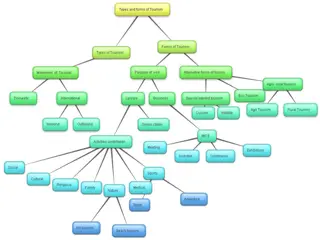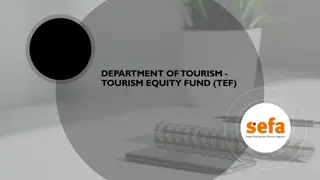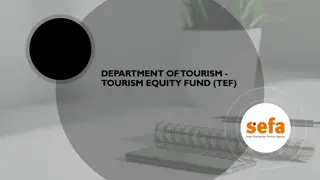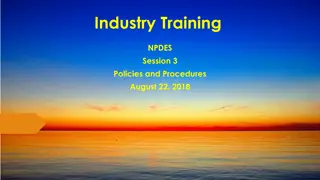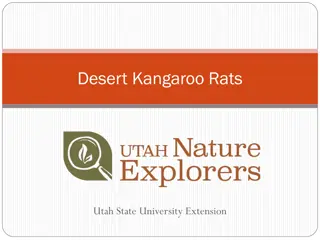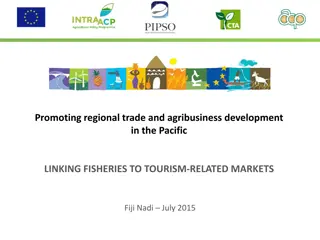Development Opportunities in the Sahara Desert: Mining, Energy, Farming, and Tourism
The Sahara Desert offers various development opportunities such as mineral extraction, energy production, farming, and tourism. Mining resources like limestone and metals, energy sources such as oil and gas, agricultural activities in oases, and tourism potential are key aspects providing social, economic, and environmental benefits to different groups in the region.
Download Presentation

Please find below an Image/Link to download the presentation.
The content on the website is provided AS IS for your information and personal use only. It may not be sold, licensed, or shared on other websites without obtaining consent from the author.If you encounter any issues during the download, it is possible that the publisher has removed the file from their server.
You are allowed to download the files provided on this website for personal or commercial use, subject to the condition that they are used lawfully. All files are the property of their respective owners.
The content on the website is provided AS IS for your information and personal use only. It may not be sold, licensed, or shared on other websites without obtaining consent from the author.
E N D
Presentation Transcript
What development opportunities does the Sahara desert provide? Describe how-mineral extraction; energy; farming & tourism provide social, economic and environmental opportunities for different groups of people.
Location Where is the Sahara Desert The Sahara desert is located in northern Africa. It is the largest hot desert in the world. It covers countries such as Algeria, Libya, Egypt and Chad.
What Economic Development opportunities does the Sahara offer?
Farming Mining Energy Tourism
Mining Resources such as limestone and gypsum (for making plaster) are found in the Sahara desert - and are valuable for the building industry. Iron ore, manganese, and copper are the chief metals mined in the Sahara. Phosphate is exported in large amounts from Morocco
Farming The desert area is not very fertile. Soils are quickly drained, and contain few nutrients. The farming is limited, typically a few animals on more grassy areas and fruit. Most is subsistence farming. Most of the Sahara's people live in oases and are engaged in agriculture. Dates, figs, and other fruits are the leading commercial crops. Wheat, barley, and a variety of vegetables are raised for local use. Crops are grown mainly by irrigation. Egypt is hot and dry. Most Egyptians live in the heavily irrigated Nile Valley. The irrigated land means that farmers can grown food, both to feed Egypt's growing population and for export.
Farming Because Egypt's farmland is increasingly being lost to urbanisation, wind- blown sand and salinity, the Eygptian government has begun a scheme to irrigate more land away from the Nile Valley. The Toshka Project will cost $70 billion and will use pumps and canals to transfer water from Lake Nasser into the Western Desert. It aims to: increase Egypt's irrigated land area by 30% enable high-value crops, such as olives, citrus fruits and vegetables to be grown provide food, electricity and jobs for 16 million Egyptians in new towns in the desert improve roads, railways and telecommunications promote tourism
Energy The Sahara is developing as a major source of oil, gas, and metal ores. The petroleum fields of Algeria, Libya, and Tunisia, linked by pipeline to several Mediterranean ports, are important producers of oil and gas. The large oil and gas reserves underneath the Sahara Desert are difficult to find and extract. For Algeria, though, oil and gas are an important source of income for the country (half its total income). Using fossil fuels like oil and gas is not sustainable so Algeria is beginning to prepare for a future without them. Work has begun on constructing the country's first solar power plant. They aim to cover large areas of the desert with solar panels to then export the solar power to Europe through cables below the Mediterranean Sea
Tourism Tourism is a growing industry, and locals can act as guides and provide transport such as hiring out camels. Tourism provides money and jobs for local people However there can be downsides to tourism such as overcrowding, littering, damage to the wildlife and environment.
Describe and explain the economic opportunities that the desert provides (8 marks) Location Where is the Sahara desert located? Describe and explain each of the economic opportunities that you have researched for homework.
The hot desert-an environment of challenges or economic opportunities? Discuss .






